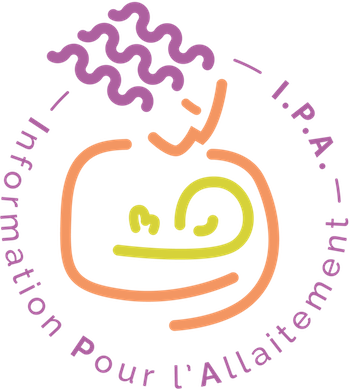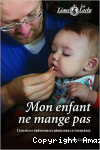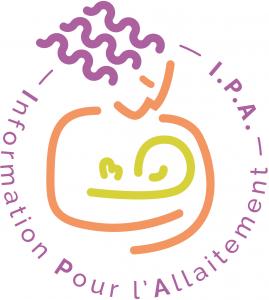Catégories
Documents disponibles dans cette catégorie (86)
Bulletin : texte imprimé
Hot Milk, n°9 - Automne 2017
2017Bulletin : texte imprimé
Hot Milk, n°13 - Automne 2018
2018Bulletin : texte imprimé
Breastfeeding Review, Vol. 26, n°3 - Novembre 2018
2018Bulletin : texte imprimé
Breastfeeding Medicine, Vol. 14, n°4 - Mai 2019
2019Bulletin : texte imprimé
Breastfeeding Medicine, Vol. 1, n°3 - Automne 2006
2006Bulletin : texte imprimé
Les Dossiers de l'Allaitement, n°159 - Juin 2020
La Leche league France, Auteur | 2020SOMMAIRE : Cas cliniques Ablation d’implants mammaires chez une mère allaitante 1 Détection du virus de la fièvre jaune dans le lait maternel 2 Allaitement d’un bébé de petit poids de naissance par une mère ayant présenté un diabète gestat[...]Bulletin : texte imprimé
Les Dossiers de l'Allaitement, n°160 - Juillet 2020
La Leche league France, Auteur | 2020Article : texte imprimé
Academy of Breastfeeding Medicine, Auteur ; Anne Eglsah, Auteur ; Liliana Simon, Auteur |texte imprimé
Cette publication fait le point sur les informations scientifiques concernant le développement physiologique au cours de la période prénatale et de la première année et ses implications sur l'alimentation infantile. Elle insiste sur les modes d[...]Article : texte imprimé
Périodique : texte imprimé
texte imprimé
"Ce précis de pratique clinique a été conçu pour assurer le soutien des professionnels qui accompagnent les familles souhaitant allaiter leur enfant. Le groupe d'auteurs (pédiatre, gynécologue, nutritionniste, pharmacien, puéricultrices, sages-f[...]Article : texte imprimé
Background: Breastfeeding is known to be the most beneficial way of feeding infants, but 68% of the infants enrolled in the U.S. Department of Agriculture’s Special Supplemental Nutrition Program for Women, Infants, and Children are fully formu[...]Article : texte imprimé
Ruth Newby, Auteur ; Wendy Brodribb, Auteur ; Robert S. Ware, Auteur |This report describes information sources accessed by pregnant women around antenatal and early infant diet. Australian women in their first pregnancy (n=277) responded to questionnaires online and on paper between June 2010 and March 2011 as pa[...]Article : texte imprimé
Melissa Ann Theurich, Auteur ; Veit Grote, Auteur |In 2015, more than one million migrants and refugees arrived in Europe. Commercial complementary foods, processed foods marketed for infants and young children 6-23 months of age, were distributed by various humanitarian actors along migrant rou[...]Article : texte imprimé
Key Messages Commercial food packaging and devices are promoted on the global market for complementary feeding. There is little empirical evidence on the effects of complementary feeding devices and respective marketing on infant and young c[...]Article : texte imprimé
Stephanie Canale, Auteur ; Nicole Blute, Auteur ; Tian Xia, Auteur |Background: Human milk is a biofluid that can contain heavy metals such as arsenic, cadmium, lead, and mercury. These toxins can adversely affect endocrine, respiratory, immune, and nervous systems. Infants may have higher dietary arsenic exposu[...]texte imprimé
Guide pratique de l'allaitement et du maternage, écrit à partir de l'expérience de centaines de milliers de mères qui allaitent.Article : texte imprimé
Pei-Lin Chen, Auteur ; Nelis Soto-Ramirez, Auteur ; Hongmei Zhang, Auteur |Background: Gastroesophageal reflux in neonates is frequently reported by parents, potentially motivating changes in infant feeding mode and/or addition of solid food. Objective: The authors prospectively analyzed associations between repea[...]texte imprimé
Gill Rapley, Auteur ; Tracey Murkett, Auteur | 2010"Baby-Led Weaning explodes the myth that babies need to be spoon-fed and shows why self-feeding from the start of the weaning process is the healthiest way for your child to develop. With BLW, you can skip purées and make the transition to solid[...]Article : texte imprimé
Laura Burnham, Auteur ; Stephanie Matlak, Auteur ; Gregory Makrigiorgos, Auteur |Background: Although introduction of inappropriate foods and liquids in early childhood and their association with breastfeeding is commonly reported in US children, coffee use in very young US children and its association with breastfeeding is[...]Article : texte imprimé
Anne M. Williams, Auteur ; Caroline Chantry, Auteur ; Eveline L. Geubbels, Auteur |Background: Appropriate infant feeding is a persistent challenge for human immunodeficiency virus (HIV)-infected mothers in sub-Saharan Africa. Objective: This study aimed to describe correlates of infant feeding among HIV-infected mothers [...]Article : texte imprimé
Background Little research has focused on breastfeeding and diet quality, particularly in low-income populations at risk for shorter breastfeeding duration and poorer diet quality. Research Aim The aim of this study was to examine the assoc[...]Article : texte imprimé
Nimah Bahreini-Esfahani, Auteur ; Amir Rez Moravejolahkami, Auteur |Background: Human milk potentially includes probiotic Lactobacillales, an order of gram-positive bacteria that have the ability to ferment sugars to lactic acid. These bioactive agents may be affected by maternal dietary patterns. This study aim[...]Article : texte imprimé
Pelin Basim, Auteur ; Yasar Özdenkaya, Auteur |Background/Objective: Various dietary factors, including the daily food intake during pregnancy and lactation can play a role in the development of lactational mastitis (LM). To investigate the effect of the most commonly consumed fermented food[...]Article : texte imprimé
Article : texte imprimé
Océane Pêcheux, Auteur ; Stefanie I Rosin, Auteur ; Meng-Ying Xu, Auteur ; Huang Ying, Auteur ; Jean-Baptiste Le Pichon, Auteur |Article : texte imprimé
Zeljka Topic, Auteur ; Lisa H. Amir, Auteur ; Irena Zakarija-Grkovic, Auteur |Objectives: To determine how GPs manage breastfeeding women with mastitis and how confident they are in treating women with breast conditions that occur during lactation. Design, participants and setting: A cross-sectional survey conducted a[...]Article : texte imprimé
Several components of breast milk show circadian variability. It is likely that at least some of these macronutrients, hormones, and micronutrients produce circadian stimuli that enhance the well-being of breast-fed infants. Future research shou[...]Article : texte imprimé
Juhee Kim, Auteur ; Rose Ann Mathai, Auteur |Background: The environment or setting to which an infant is exposed is crucial to establishing healthy eating habits and to preventing obesity. This study aimed to compare infant feeding practices and complementary food type between parent care[...]Article : texte imprimé
S Fanello, Auteur ; I Moreau-Gout, Auteur ; JP Cotinat, Auteur |Objectif- Le but de ce travail a été de comprendre les motivations et les obstacles dans le choix ou la poursuite de l'allaitement maternel. Population et méthodes - L'enquête a été menée auprès de 308 femmes ayant accouché depuis au moins trois[...]Article : texte imprimé
Nouf M. AlKusayer, Auteur ; William K. Midodzi, Auteur ; Leigh Anne Newhook, Auteur |Background: The original 17-item Iowa Infant Feeding Attitude Scale (IIFAS) has been validated and widely used to assess attitudes toward breastfeeding. A reduced 13-item version of the IIFAS was recently validated in a Canadian setting. Howeve[...]Article : texte imprimé
texte imprimé
"Dormir avec son bébé est la norme dans presque toutes les cultures, depuis toujours. Toutefois, dans notre société moderne, cette pratique fait l’objet de questionnements et de culpabilité. Dans Dormir avec son bébé : un guide sur le sommeil pa[...]Article : texte imprimé
Article : texte imprimé
Aunchalee E.L. Palmquist, Auteur ; L. Doshmangir, Auteur ; RJ McCloskey, Auteur ; S. Karandikar, Auteur |Article : texte imprimé
Drugs are not the preferred method of weight loss, and information on them during breastfeeding is almost nonexistent. Several of them might cause adverse effects on the infant or on lactation itself. Nonabsorbable products such as orlistat and [...]Article : texte imprimé
Mothers often choose breastfeeding to give their children the best start in life. As you work with your clients, have you ever wondered if your effect on early life nutrition might have longer lasting effects? For example, could a woman’s exposu[...]Article : texte imprimé
Sivan Yochpaz, Auteur ; Françis B. Mimouni, Auteur ; Dror Mandel, Auteur |Objective: To conduct a systematic review of the effect of freezing and thawing on the macronutrients and energy composition of human milk (HM). Design: Systematic review conducted in May 2019, including all studies reporting macronutrients a[...]Article : texte imprimé
Alexandra L. MacMillan Uribe, Auteur ; Beth H. Olson, Auteur |Background: Postpartum weight retention is often a significant contributor to overweight and obesity. Lactation is typically not sufficient for mothers to return to pre-pregnancy weight. Modifiable health behaviors (e.g., healthy eating and exe[...]Article : texte imprimé
Cette étude a été réalisée au CHU de Rennes, afin de déterminer le taux d'allaitement maternel des nouveau-nés hospitalisés dès les premiers jours de vie, ainsi que les facteurs associés au choix d'allaiter ou non dans ces conditions de transfer[...]Article : texte imprimé
Jason P. Bentley, Auteur ; Diana Bond, Auteur ; Michelle De Vroome, Auteur |Background: Previous breastfeeding experience has been associated with subsequent infant feeding practices. However, few longitudinal studies have investigated formula-only feeding patterns or the full range of potentially associated characteri[...]Article : texte imprimé
Anthea Magarey, Auteur ; Foorough Kavian, Auteur ; Jane A. Scott, Auteur |Background: In 2011, Australia published a set of 6 population-level indicators assessing breastfeeding, formula use, and the introduction of soft/semisolid/solid foods. Objectives: This study aimed to report the feeding practices of Austra[...]Article : texte imprimé
Erica Morrell, Auteur |Breastfeeding and first foods--including human milk and infant formula--affect us all as individuals and a society of eaters and feeders. They also shape us in part through having significant effects on community health and well-being, workplace[...]Article : texte imprimé
Rebecca Hoban, Auteur ; Harold Bigger, Auteur ; Aloka L. Patel, Auteur |Background: Little is known about human milk (HM) feeding goals for mothers of very low birth weight (VLBW) (Article : texte imprimé
Yiska Loewenberg Weisband, Auteur ; Joseph Rausch, Auteur ; Rashmi Kachoria, Auteur |Background: Little is known about how in-hospital supplementation with water, infant formula, or sugar water affects the relationship between breastfeeding intentions and duration, and whether this differs by gestational diabetes mellitus (GDM) [...]Article : texte imprimé
Beverly Rossman, Auteur ; Paula P Meier, Auteur ; Judy E Janes, Auteur |Introduction: Breastfeeding rates are virtually unknown for teen mothers whose low-birth-weight (LBW;Article : texte imprimé
Mother's own human milk is the best nutrition for infants, especially preterm very-low-birth-weight (VLBW) (≤1,500 g) infants, because of its immune-modulatory constituents that strengthen the infant's host defense, provide protectio[...]Article : texte imprimé
Article : texte imprimé
Article : texte imprimé
Melissa E. Glassman, Auteur ; Karen McKearney, Auteur ; Minna Saslaw, Auteur |Background: Latinas have high breastfeeding initiation rates that decrease significantly in the first postpartum months. Little is known about the effects of self-efficacy and sociocultural factors on early breastfeeding among low-income Latinas[...]Article : texte imprimé
Article : texte imprimé
Aleksandra Wesolowska, Auteur ; Urszula Bernatowicz-Lojko, Auteur ; E Sinkieqicz-Darol, Auteur |Background A human-milk-based diet is the best option for nutritional therapy for preterm and/or sick newborns. Research aim The study aims were to restructure the reimbursement rates to hospitals in Poland for infants’ tube feedings to fav[...]Article : texte imprimé
Article : texte imprimé
Cristiano Siqueira Boccolini, Auteur ; Rafael Pérez-Escamilla, Auteur ; Elsa Regina Justo Giugliani, Auteur |Background: Prelacteal feeds (ie, foods other than breast milk offered before the milk comes in) have been identified as a risk factor for shorter breastfeeding duration and neonatal mortality. Objective: This study aimed to test for socioe[...]Article : texte imprimé
Grace Pelak, Auteur ; Anna M. Wiese, Auteur ; Jennifer M. Maskarinec, Auteur |Background: Breastfeeding may protect against childhood asthma and allergic diseases. Studies have not focused on the mode of feeding human milk and followed children to school age although feeding human milk from a bottle rather than the breast[...]Article : texte imprimé
Many Australian infants are being diagnosed as having 'reflux' based on symptoms alone, rather than on diagnostic tests. They are then prescribed medication. Research has clearly demonstrated that these medications are ineffective in infants and[...]Article : texte imprimé
Olof H. Jonsdottir, Auteur ; Mary S. Fewtrell, Auteur ; Geir Gunnlaugsson, Auteur |Introduction: Breastfeeding has several advantages for both mother and child. Lactation consultants may promote prolonged breastfeeding, but little is known about their impact on the initiation of complementary feeding. Subjects and Methods: [...]Article : texte imprimé
Elizabeth McGuire, Auteur |In 2004, in response to evidence of a re-emergence of iodine deficiency in Australia, a National Iodine Nutrition Survey was conducted. The survey found that while Western Australia and Queensland were iodine sufficient, South Australia was bord[...]Article : texte imprimé
Sahra A. Kahin, Auteur ; Meghan McGurk, Auteur ; Heidi Hansen-Smith, Auteur |Background: Breastfeeding is the optimal method for infant feeding. In the United States, 81.1% of mothers initiate breastfeeding; however, only 44.4% and 22.3% of mothers are exclusively breastfeeding at 3 and 6 months, respectively. Resear[...]Article : texte imprimé
Jordyn T. Wallenborn, Auteur ; Timothy Ihongbe, Auteur ; Sylvia Rozario, Auteur |Background: According to the American Academy of Pediatrics, infants should be exclusively breastfed for the first 6 months of life followed by breastfeeding with complementary food for up to 2 years of age or beyond. Knowledge of breastfeeding [...]Article : texte imprimé
Hassan Boskabadi, Auteur ; Javad Akhondian, Auteur ; Maliheh Afarideh, Auteur |Background: Neonatal hypernatremic dehydration (NHD) is a dangerous condition that can lead to severe weight loss, renal impairment, and central nervous system complications. We aimed to evaluate the consequences of NHD in infants in their secon[...]Article : texte imprimé
Background A primary role of human donor milk banks is to provide pasteurized human milk for the sick and preterm infant populations and to support the mothers of these infants as they establish their own milk supply. The results of human milk [...]Article : texte imprimé
Claire Castelli, Auteur ; Jeanne Perrin, Auteur ; Xavier Thirion, Auteur |Objectives: The breastfeeding initiation rate is extremely disparate worldwide and remains low in France, with a breastfeeding initiation rate of 60.2%. Some studies have reported increased early parenting difficulties in women who conceived wit[...]Article : texte imprimé
Jinyue Yu, Auteur ; Zhuang Wei, Auteur ; Olga Lukoyanova, Auteur |Objective: The aim of this study was to compare mothers' attitudes toward infant feeding and infant eating behavior in different countries, and their associations with infant feeding at 3 and 6 months. Methods: Data from 164 mothers with heal[...]Article : texte imprimé
texte imprimé
Nicole Doré, Auteur ; Danielle Le Hénaf, Auteur | INSPQ - Institut national de santé publique | 2017Un guide pratique destiné aux mères et pères qui offre une information appuyée scientifiquement sur la grossesse, l’accouchement et les deux premières années de vie de l’enfant.[Présentation par IPA]texte imprimé
Les parents de partout à travers le monde se demandent si leur bébé ou leur bambin mange assez. Carlos González, un pédiatre et un père, explore les raisons qui poussent un enfant à ne pas manger, les pièges des courbes de croissance et les impa[...]Article : texte imprimé
Britt Frisk Pados, Auteur ; Jinhee Park, Auteur ; Suzanne Thoyre, Auteur |Background The Neonatal Eating Assessment Tool—Breastfeeding is a valid and reliable 62-item parent-report assessment of symptoms of problematic breastfeeding behavior intended for infants less than 7 months old. Research aim The aim of thi[...]texte imprimé























































